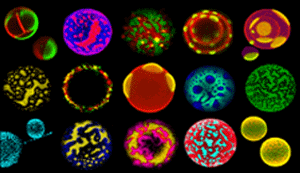The Black Panthers A collection of photographs by Stephen Shames
The Revolution will not be televised. But if it is, it should star the Black Panthers. The Black Panther Party, one of the most iconic movements to emerge from a century filled with revolution, caught the imagination of oppressed people the world over. Their narrative was of bread and guns. Their imagery was key, and it is fitting that the 40th anniversary is marked by the publication of a photographic history. Stephen Shames, a close friend of founding Panthers Bobby Seale and Huey P Newton, photographed the movement between 1968-73, during years of extraordinary social change.
Originally called The Black Panther Party for Self-Defense, the Panthers burst onto the scene in October 1966 while African-Americans still mourned the death of Malcolm X, murdered in February 1965. When Martin Luther King lay dead on a Memphis balcony in April 1968, it seemed the Panther’s initial rejection of King’s integrationism had been vindicated in the most appalling way.
This book’s appeal is that these pictures both confirm and confound the Black Panther stereotype. They remind us that the Panthers were not only a revolutionary organisation demanding “land, bread, housing education, clothing, justice and peace” – they were also (other than the church) the most effective relief organisation the black community had ever known. At its height, the Panther’s Free Breakfast for Children Program fed 250,000 children across America every day before school.
The Panther’s slogan “All Power to All the People” slapped down the notion that it was a purely black nationalist organisation, only interested in black power. Rather, much of the Panthers success came from their willingness to forge broad alliances (both politically and ethnically). In doing so, the Panthers became a lightening rod for the 60s swirling counterculture.
In 1968 the head of the FBI, Edgar Hoover, described the Black Panthers as the greatest threat to the internal security of America. Of 295 counterintelligence operations carried out by the FBI on black-power organisations, 233 targeted the Panthers. Why were they considered such a threat? It was not their numbers (by the end of the seventies their membership dwindled to less than 50), nor was it merely their aim (the empowerment of black people across America), it was their sheer audacity, and their ability to bring militant and non-militant groups together. They had the cheek to send out armed patrols to monitor the notorious LA Police. They marched past Ronald Reagan on the lawn of the California State Legislature, and read out their manifesto to a shocked nation. They called for a UN plebiscite on American soil to afford African-Americans self-determination. And they organised with great effectiveness throughout the country, winning the hearts and minds of many black people otherwise untouched by electoral politics.
As Bobby Seale writes in the book’s forward, “advocating for social change is not just about speaking at a podium, but about inspiring party members and other community people” – a lesson for many politicians in Britain today.
Stephen Shames’ photographs encapsulate the movement’s journey from revolutionary politics to electoral politics. Like most political organisations, the Panthers finally fell apart (after 16 years) due to infighting, irreconcilable differences around interpretations of their manifesto, and a personality cult that allowed the leadership failings of Huey P Newton to run riot.
The Panthers unique mix of black self-help and socialism did not instigate revolution or win electoral office. But notwithstanding their failings, the Panthers revolutionised American culture, changing the mindset of a generation - both black and white. As Gil Scott Heron said, the revolution will not be a re-run. But if it is, it should be the Black Panthers.
Review by Oona King, Published in the New Statesman

